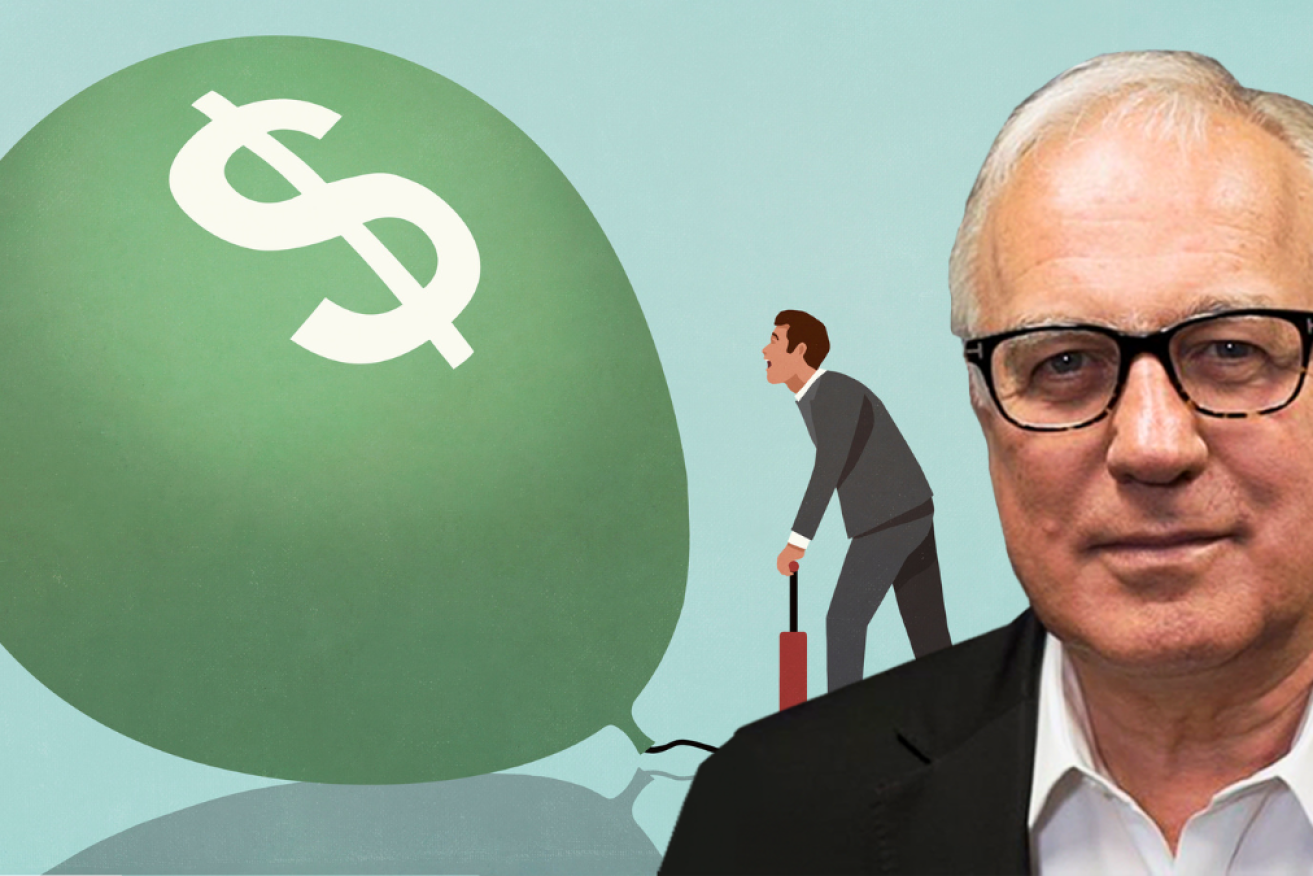Alan Kohler: It’s looking increasingly like inflation targets may have outlived their usefulness


Photo: Getty/TND
The inflation battle of 2022-23 has moved from crushing demand created by the excessive (with hindsight) pandemic response to suppressing wages.
Central banks are now raising interest rates to stop businesses giving wage rises above inflation, and if they do, to prevent them being passed on in prices.
But these are treacherous waters.
As the Bank for International Settlements (BIS) said in its annual report last week: “It is the first time that … a surge in inflation has coexisted with widespread financial vulnerabilities.”
Those vulnerabilities are entirely the result of the central banks’ own work – a decade of minuscule interest rates has left the world highly leveraged and financially exposed.
In some ways the problem is inflation targeting.
It seemed like such a good idea when New Zealand adopted it in 1990 that everyone else followed suit – Australia and the UK in 1992, and the United States, eventually, in 2012. Some have a straight 2 per cent inflation target; others, like Australia, settled on a band. Ours is 2 to 3 per cent.
The low-interest blunder
So when inflation fell below 2 per cent after the GFC and refused to rise back to target, central banks felt obliged to slice interest rates to the bone to get it up.
Ultra-cheap money for a decade followed, which had two effects:
- Australians used the extra borrowing power to bid up house prices by 50 per cent in five years, so that household debt is a house of cards
- Private equity loaded the corporate world up with debt as well.
Now those same inflation targets are forcing central banks to crank interest rates up to get it back down to the target.
In Australia the stress is on households, but not all of them, or possibly even most at this stage. The statistical average household is still loaded up with cash from the pandemic, but the hapless borrowers with little or no cash left (mostly recent home buyers) are doing all the work of bringing inflation down by cutting back spending more than the debt-free savers increase theirs.
How many more rate hikes until they go under? Let’s hope we don’t have to find out, but it will depend entirely on how successful workers are in getting wage rises above inflation. This, in turn, will determine how many more rate hikes there are.
As for private equity, the BIS annual report had this: “[private equity’s] contribution to corporate indebtedness is a cause of concern. As borrowing costs increase, the highly leveraged companies that private funds have invested in could face difficulties in refinancing and repaying their debt, a large share of which is estimated to mature in the next three years.”
Last Friday economists at the US Federal Reserve published a paper entitled ‘Distressed Firms and the Large Effects of Monetary Policy Tightenings‘, which concluded:
“With the share of distressed firms currently standing at around 37 per cent, our estimates suggest that the recent policy tightening is likely to have effects on investment, employment, and aggregate activity that are stronger than in most tightening episodes since the late 1970s.
“The effects in our analysis peak around one or two years after the shock, suggesting that these effects might be most noticeable in 2023 and 2024.”
The stresses keep mounting
In Australia, ASIC reported last week that company insolvencies increased 58 per cent in May (from April). Corporate distress is rising.
Australia’s inflation target is flexible at least, and the RBA is shooting for 3 per cent in two years’ time, not 2 per cent in a hurry, which is why our cash rate is 4.1 per cent and America’s is above 5 per cent.
The problem now is that as the inflation pulse from the pandemic fades, the labour market is taking over as the driver of inflation, and that’s going to be a much tougher adversary than aggregate demand.
As Fed chairman Jerome Powell put it at a forum in Portugal last week run by the European Central Bank: “Labour is pulling the economy”. He continued: “… although policy is restrictive, it may not be restrictive enough, and it has not been restrictive for long enough”.
He meant long enough to stop wages growth in its tracks.
But he and every central banker is fighting a megatrend entirely outside their control – the shift from manufacturing to services.
It’s caused by three things, in my view:
- Automation in manufacturing is replacing humans, especially in the west, so workers have to find other jobs
- Population ageing requires a lot more health care and aged care
- Increasing female workforce participation requires more child care, cleaning and eating out or takeaway.
The demand for labour for services is greater than the amount of labour freed up by the robots in manufacturing, leading to chronic labour shortages around the world.
At the same time, services have lower productivity (output per hour of labour), which means wage rises are more inflationary. Any real wage rise (that is, above inflation) not offset by productivity growth is inherently inflationary.
Absorb wage costs or pass them on?
The BIS describes the problem in terms of the “last mile” of bringing inflation back to target, which could prove harder than the first mile.
“The surprising inflation surge has substantially eroded the purchasing power of wages. It would be unreasonable to expect that wage earners would not try to catch up, not least since labour markets remain very tight. In a number of countries, wage demands have been rising, indexation clauses have been gaining ground and signs of more forceful bargaining, including strikes, have emerged.
“If wages do catch up, the key question will be whether firms absorb the higher costs or pass them on. With firms having rediscovered pricing power, this second possibility should not be underestimated.”
The bigger key question is whether this is compatible with central bank inflation targeting.
With robots having taken over manufacturing and mining, and huge growth of health care, aged care, hospitality and other service industries, the labour shortages, low productivity growth, pricing power and higher profit margins are only going to continue.
Blind adherence to an inflation target set 30 years in the past, when the world was a different place, could lead to disaster.
Alan Kohler is founder of Eureka Report and finance presenter on ABC news. He writes twice a week for The New Daily








